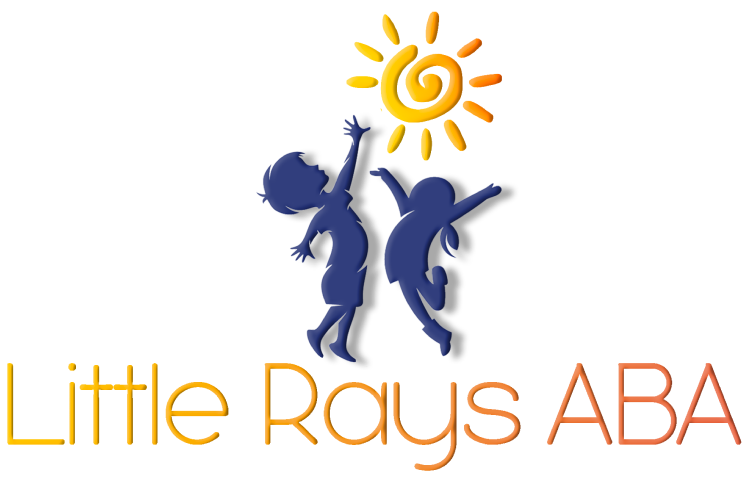Elopement behavior, often observed in individuals with autism spectrum disorder (ASD) and other developmental disabilities, presents a significant concern for families and caregivers. This behavior often involves wandering away from safe environments or trusted individuals, potentially leading to hazardous situations. Understanding the complexities of elopement in the context of autism is paramount to ensuring the well-being and safety of those on the spectrum.
Understanding Elopement in Autism
Elopement in autism isn't merely children "running away." It's often a manifestation of the unique ways autistic individuals interact with and perceive the world. Sensory sensitivities, difficulties with communication, and anxieties can contribute to this behavior. Imagine a child overwhelmed by the noise and lights of a crowded supermarket. For them, elopement might be an attempt to escape to a calmer, less overwhelming environment.
The responsibility lies with parents, caregivers, and educators to recognize the potential reasons behind elopement and create strategies for prevention and intervention. A comprehensive approach that addresses both the individual's needs and the environmental factors is crucial in effectively managing elopement in autistic individuals.
Defining Elopement Behavior in Autistic Individuals
Elopement, commonly referred to as wandering, describes a behavior often observed in individuals on the autism spectrum. This behavior goes beyond typical childhood curiosity and can present considerable safety risks. For those on the autism spectrum, elopement is not a deliberate act of defiance but rather a complex response to their surroundings.
Sensory overload, a common experience for individuals on the spectrum, can trigger elopement behavior. Imagine being highly sensitive to sounds, lights, or even textures; the overwhelming input might lead to a need to escape the environment. Similarly, communication difficulties can play a significant role in elopement. If an individual struggles to express their needs or anxieties verbally, elopement may become a means of communication.
Therefore, understanding the root causes of elopement in autism requires recognizing the sensory and communication challenges these individuals often face. Addressing these challenges through tailored strategies is vital to ensuring their safety and well-being.
The Prevalence and Impact of Elopement
Elopement is a prevalent concern among families with autistic children. Studies indicate a significant percentage of children with autism have attempted to or have eloped from safe environments. This behavior can have severe consequences, as autistic individuals might not fully grasp potential dangers like traffic or bodies of water.
Alarmingly, accidental drowning is a leading cause of death among children with autism. The tendency to wander towards water sources, coupled with difficulties in communicating distress, makes this a particularly concerning aspect of elopement. Similarly, instances of elopement near roadways pose a significant threat. The unpredictable nature of traffic and the potential for autistic individuals to wander into traffic underscore the life-threatening risks associated with this behavior.
Addressing elopement, therefore, is not merely about managing behavior: It's about preventing tragedies and ensuring the safety and well-being of individuals on the autism spectrum.
Identifying the Causes of Elopement in Autism
Understanding why elopement occurs is the first step towards effective prevention. Elopement isn't just about a child wanting to run away; it's often a sensory-driven reaction or a form of communication for individuals with autism.
Consider this: A child might be overwhelmed by loud noises in a public space and elope to seek a quieter environment. Alternatively, they might elope to reach a preferred location or object, driven by their specific interests and the challenges they face in expressing those desires verbally.
Environmental Triggers and Sensory Overload
Sensory processing differences are common in autism, making individuals more sensitive to environmental stimuli. Sensory overload occurs when these stimuli become too intense, causing discomfort or even distress. A seemingly ordinary environment, such as a grocery store with bright lights, loud music, and various smells, can become overwhelming for an individual with sensory sensitivities, potentially triggering elopement behavior.
Even subtle environmental triggers, such as flickering lights or certain textures, can provoke a sensory overload response. Imagine trying to concentrate in a room full of buzzing electronics— the constant noise could make it difficult to focus or feel comfortable. For someone with autism, these sensory triggers can be amplified, making elopement a way to escape the unbearable input.
Creating sensory-friendly spaces by minimizing noise, dimming lights, and offering quiet areas can significantly reduce environmental triggers and minimize the likelihood of elopement due to sensory overload.
Communication Challenges and Anxiety
Difficulties with communication can significantly contribute to elopement behavior in individuals with autism. Imagine being unable to express your needs, fears, or anxieties effectively. The frustration and inability to communicate can lead to elopement as a way to escape or seek help. Individuals with autism might elope to avoid situations that cause them anxiety, such as social interactions or transitions.
For instance, a child might elope from a crowded playground, not because they dislike other children but because the social interaction becomes too overwhelming. Functional communication training is an effective approach to empowering individuals with autism to express their needs and anxieties more effectively. By teaching alternative forms of communication, such as sign language or picture cards, individuals can better convey their feelings, reducing the need to elope.
When individuals have the tools to communicate, they can better navigate their environment and interact with others, reducing anxiety and mitigating the urge to elope.
A Beginner’s Guide to Managing Elopement
Managing elopement requires a multi-faceted approach that combines environmental modifications, behavioral strategies, and technological aids. It's not about restricting an individual's freedom but about empowering them to navigate their surroundings safely.
Start by understanding the individual’s triggers, creating structured routines, and fostering open communication about their needs and anxieties. Additionally, leveraging technology, such as GPS trackers and home security systems, can provide an added layer of protection.
Essential Tools and Resources for Prevention
Preventing elopement involves utilizing a range of tools and resources designed to enhance safety and support individuals with autism. One essential tool is the use of GPS trackers. These devices, worn on the wrist or attached to clothing, allow caregivers to locate individuals quickly in case of elopement.
Visual supports, such as visual schedules and social stories, are effective in preparing individuals for transitions and reducing anxiety that may trigger elopement. These visual aids provide predictability and understanding, helping individuals feel more in control of their surroundings.
- GPS trackers: Track the individual's whereabouts in real-time.
- ABA therapy: Provides personalized behavior management strategies.
- Visual supports: Enhance communication and understanding of routines.
- Home security systems: Alert caregivers to exits and entries.
- Identification bracelets: Include crucial contact information.
Remember that early intervention is key. If you notice your child exhibiting signs of elopement behavior, consult with professionals. They can provide a thorough assessment, develop a personalized safety plan, and connect you with appropriate resources.
Step 1: Assessing Risks and Identifying Triggers
The first step in managing the risk of elopement is to assess individual triggers and potential risks. Observe your loved one's behavior patterns, noting what situations or environments tend to precede elopement attempts. Do they elope when they're overwhelmed in social situations, or are specific locations, like parks with water features, particularly enticing?
Common triggers include sensory overload, communication challenges, anxiety, and the desire to access preferred locations or objects. For instance, if loud noises or bright lights consistently trigger elopement behavior, creating calmer sensory environments at home and when venturing out can significantly reduce the risk.
Identifying specific locations that pose a higher risk is crucial in developing targeted prevention strategies. If a child is drawn to bodies of water, establishing firm boundaries and supervision protocols near those areas becomes paramount.
Step 2: Creating a Safe and Structured Environment
Creating a safe environment is crucial for reducing elopement risk and providing a sense of security for individuals with autism. This involves modifying the home and other frequented spaces to minimize potential dangers and create a more secure environment. Implementing simple yet effective measures can significantly enhance safety.
Start by securing doors and windows with extra locks or alarms, especially if your loved one is prone to wandering at night. Consider installing childproof doorknob covers or using furniture to block access to exits.
Furthermore, creating visual cues, such as stop signs on doors or visual boundaries in play areas, can help individuals with autism understand spatial limits and reduce the likelihood of elopement. Remember, the goal is not to restrict freedom but to create a safer environment where individuals with autism can thrive.
Advanced Strategies for Preventing Elopement
While creating safe environments is crucial, addressing elopement often requires implementing advanced strategies rooted in behavioral interventions and the strategic use of technology. These strategies focus on teaching alternative behaviors, managing anxiety, and providing caregivers with the tools to respond quickly and effectively in potentially dangerous situations.
Implementing a combination of behavioral interventions, technological aids, and collaborative efforts with educators and therapists can significantly minimize elopement occurrences. Remember, consistency, patience, and understanding the individual's unique needs are key to success.
Implementing Behavioral Interventions
Applied Behavior Analysis (ABA) therapy has emerged as an effective approach to addressing challenging behaviors in individuals with autism, including elopement. ABA therapists work closely with individuals and their families to understand the function of elopement behavior and develop personalized interventions. These interventions focus on teaching replacement behaviors and reinforcing desired actions.
For instance, if a child elopes to gain access to a preferred toy, ABA therapy would involve teaching the child to request the toy using appropriate communication methods, such as sign language or picture cards. By reinforcing these positive communication skills, the child learns a more socially acceptable way to achieve their desired outcome, reducing the likelihood of elopement.
ABA therapy also addresses elopement by reducing anxiety and teaching coping mechanisms for sensory overload. Through systematic desensitization, therapists gradually introduce potentially triggering stimuli, helping individuals build tolerance and develop strategies to manage their reactions in real-world settings.
Technological Aids and Safety Measures
In our technologically advanced world, caregivers have access to a range of tools that can significantly aid in preventing elopement. GPS trackers, wearable devices that can be discreetly attached to clothing or worn as watches, provide real-time location information, offering peace of mind during outings.
Furthermore, home security systems equipped with door sensors and alarms can alert caregivers instantly if an individual attempts to leave the house unsupervised. These systems are particularly helpful for preventing elopement during the night or when caregivers are momentarily distracted.
Beyond these measures, several other technological aids are available:
- Apps for communication: These apps allow individuals with autism to communicate their needs and anxieties more effectively.
- Social story apps: These apps use visual stories to teach individuals about safety and appropriate behaviors in various situations.
- Sensory-friendly headphones: These headphones can help reduce sensory overload by blocking out unwanted noises.
Remember to research the features and suitability of different devices to find the best fit for your loved one's needs.
Legal and Educational Considerations
Navigating the legal and educational considerations related to elopement in autism is crucial for protecting the rights and safety of individuals on the spectrum. Families must be aware of their rights, advocate for appropriate support within educational settings, and understand legal protections available to them.
This includes working closely with schools to develop individualized education programs (IEPs) that address elopement behavior and provide necessary accommodations to ensure the child's safety and well-being within the school environment.
Understanding Your Rights and Responsibilities
Families of individuals with autism have specific rights and responsibilities when it comes to elopement. It's crucial to understand these aspects to ensure appropriate action is taken to protect your loved one. One vital step is informing law enforcement about your loved one's autism and elopement risk.
Registering with local authorities and providing them with identifying information, such as recent photographs and communication preferences, can be invaluable during search efforts. Several legal protections are in place to support families facing elopement challenges. These protections vary by state but often include provisions for specialized training for law enforcement in interacting with individuals with autism, as well as access to tracking devices and other resources.
Furthermore, advocate for your rights within educational institutions. Schools have a responsibility to provide a safe learning environment, which includes addressing elopement risks. Collaborate with your child's school to develop a safety plan, implement necessary accommodations, and ensure staff training on elopement prevention and response.
Collaborating with Educational Institutions
Collaboration between families and educational institutions is essential for effectively addressing elopement behavior in autistic students. Open communication channels and shared responsibility for safety planning are crucial components of this collaboration. Regularly communicate with your child's teacher and school administrators about potential triggers, successful strategies, and any concerns related to elopement.
Developing a comprehensive safety plan with the school should involve identifying potential elopement risks within the school environment, establishing clear supervision protocols, and outlining response procedures. Sharing best practices for elopement prevention within the school community is also beneficial.
Educating staff members on autism awareness, sensory sensitivities, and effective communication strategies can significantly enhance their understanding and ability to support students with autism. By working together, families and educators can create a safer and more inclusive learning environment for all students.
Conclusion
In conclusion, elopement, or wandering, is a concerning behavior observed in some individuals with autism spectrum disorder (ASD), characterized by unexpected departures from safe environments, which can pose significant safety risks. Understanding the underlying causes—such as sensory sensitivities, communication challenges, or the pursuit of specific interests—is crucial in developing effective prevention strategies. Comprehensive autism treatment therapy, including Applied Behavior Analysis (ABA), plays a pivotal role in addressing elopement behaviors. By collaborating with experienced professionals, families can implement tailored interventions that enhance safety and promote positive behavioral outcomes for their loved ones.
At Little Rays ABA, we recognize the profound challenges that elopement behaviors present to families of children with autism. Our dedicated team employs evidence-based Applied Behavior Analysis (ABA) strategies to identify the underlying causes of wandering and implement personalized interventions that enhance safety and peace of mind. By collaborating closely with families, we equip them with the tools and knowledge needed to prevent elopement effectively. Experience the commitment of Little Rays ABA to safeguarding your child's well-being—contact us today to learn how our tailored ABA therapy programs can make a difference.
Frequently Asked Questions
How can technology be used to prevent elopement?
Technology plays a vital role in elopement prevention. GPS trackers and devices provide real-time location information, while home security systems with door sensors and alarms create a more secure environment by alerting caregivers to exits.
What role do educational settings play in managing elopement?
Educational settings are integral in managing elopement. Implementing structured routines, providing staff training on autism awareness and elopement response, and collaborating with families are essential steps to creating a safe environment.
Are there any legal protections for autistic individuals who elope?
In the United States, legal protections for autistic individuals who elope vary by state. Many states have implemented initiatives to improve law enforcement response and provide resources for families, such as access to tracking devices and safety programs.
Sources:
- https://www.nimh.nih.gov/health/topics/autism-spectrum-disorders-asd
- https://www.health.qld.gov.au/newsroom/features/sensory-overload-is-real-and-can-affect-any-combination-of-the-bodys-five-senses-learn-ways-to-deal-with-it
- https://www.nbcwashington.com/news/local/drowning-is-leading-cause-of-death-among-people-with-autism-who-wander/
- https://www.autismspeaks.org/sensory-processing-disorder
- https://www.crohnscolitisfoundation.org/research/challenges-ibd/environmental-triggers
- https://kidshealth.org/en/parents/iep.html
Unlock Your Child's Potential with Expert ABA Therapy!
At Little Rays ABA, we provide compassionate, evidence-based ABA therapy to help children with autism thrive. Our personalized approach fosters growth in communication, social skills, and independence.
Get In Touch With Us Today to Get Started With ABA Therapy!
Related Posts
MENU
GET IN TOUCH
7117 San Salvador Dr Boca Raton, FL 33433
3200 Collins Ave Miami Beach, FL 33140





